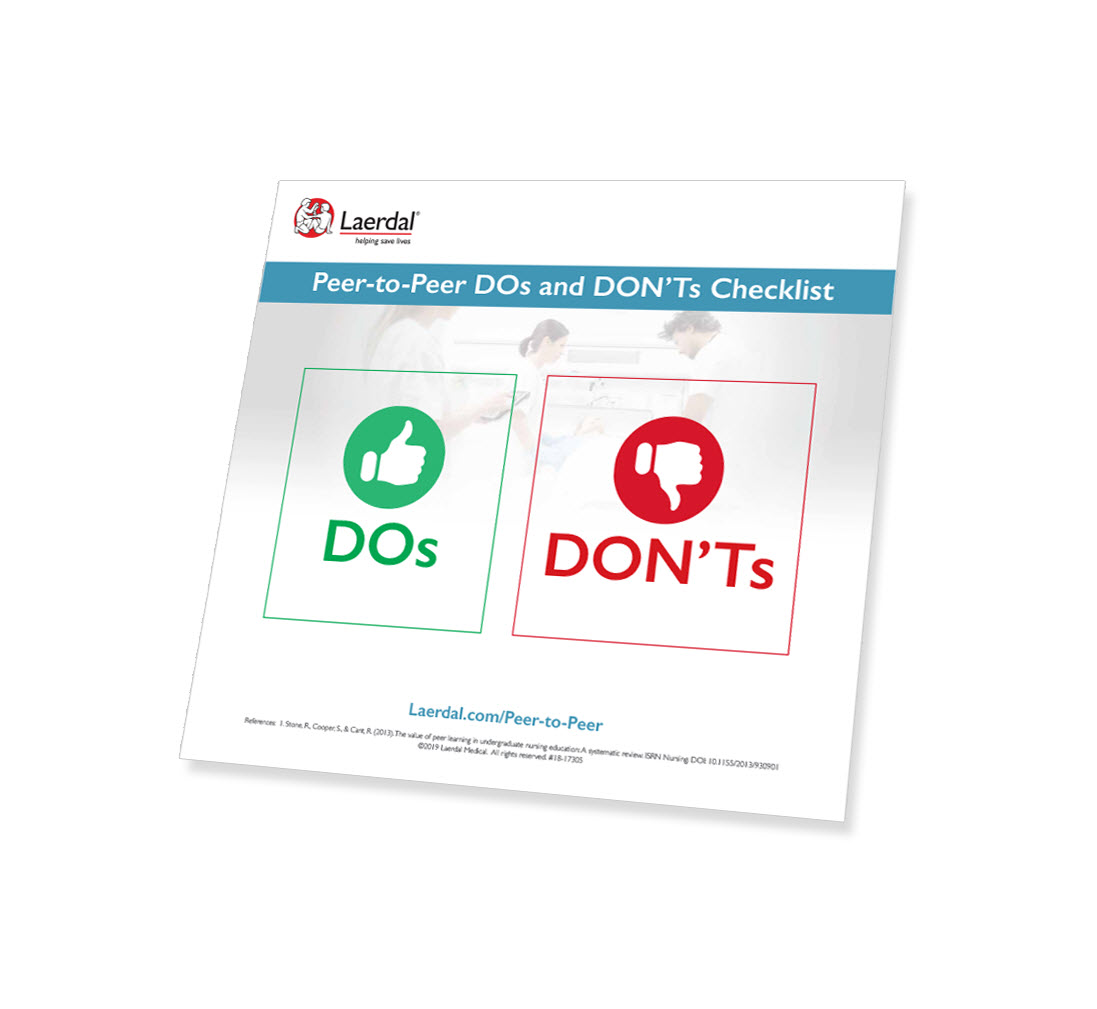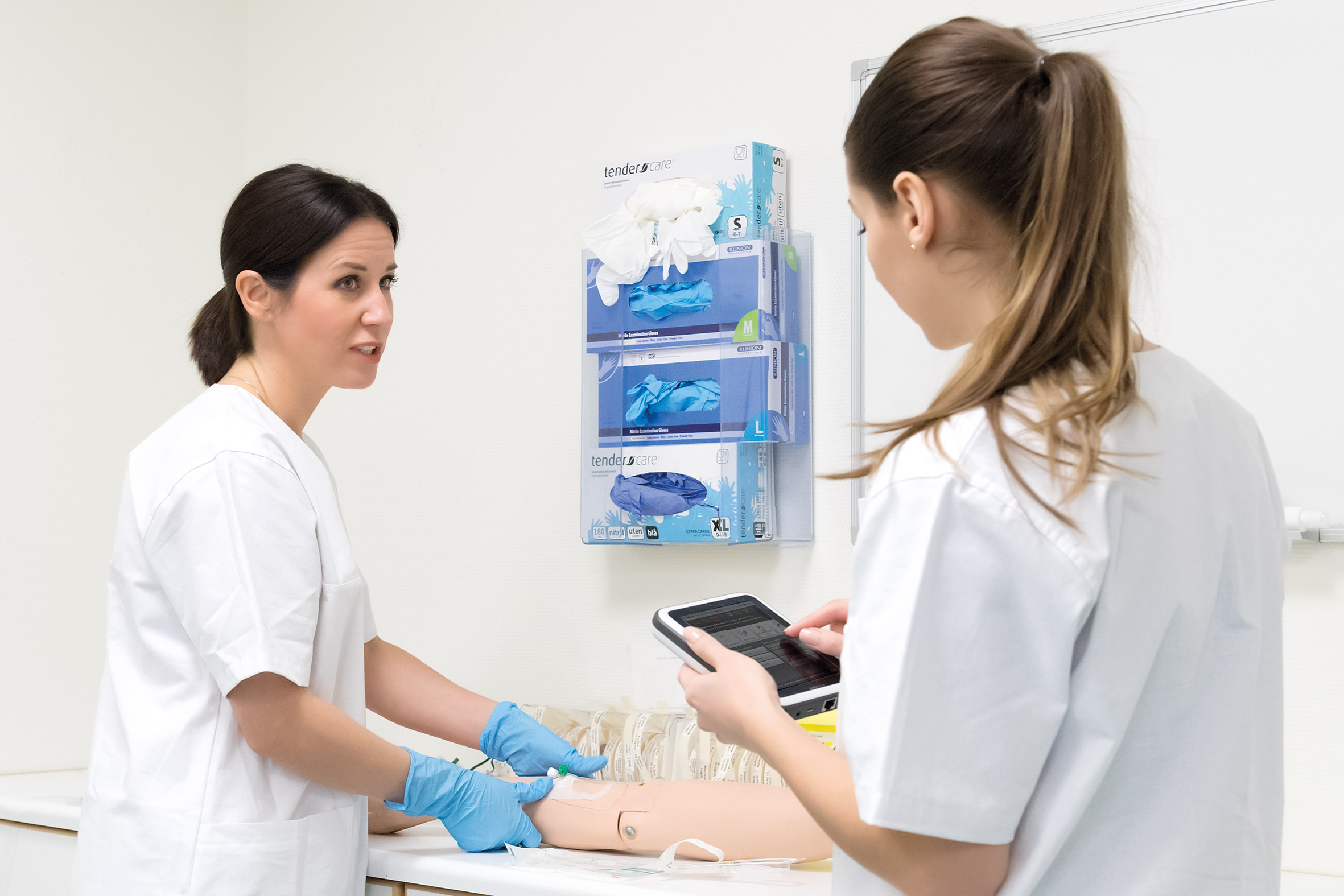Bij een typisch hoorcollege is maar 40% van de studenten actief aan het opletten.1 70% van de studenten onthoudt wat ze in de eerste 10 minuten van een college horen, en slechts 20% van de studenten onthoudt wat ze in de laatste 10 minuten horen.2 Voor docenten kan dit ontmoedigend zijn. Voor opleidingsprogramma's vormt dit een ernstig probleem. Studenten die moeten afstuderen met levensreddende vaardigheden en kennis, zullen zich mogelijk een groot deel van de leerstof niet herinneren.
"Als we lesgeven, leren we zelf ook", zei de Romeinse filosoof Seneca. Al duizenden jaren keert het onderwijs steeds terug naar deze wijsheid. Het succes van docenten die studenten anderen les laten geven staat bekend als het protegé-effect. In combinatie met simulatie om klinische vaardigheden te leren, biedt dit een ideale kans om een ouderwetse leermethode nieuw leven in te blazen.
Tijdens peer-to-peer learning is de aangewezen docent (de protegé) veel gemotiveerder om te leren. Studenten doen over het algemeen meer moeite om te leren als ze anderen les moeten geven dan voor zichzelf.3 En er zijn ook voordelen voor de niet-protegé. Leren wordt een sociale activiteit, omdat alle studenten met elkaar samenwerken om de lesstof beter te begrijpen.4
In verpleegkundige opleidingen, die het steeds vaker met minder moeten doen, is peer-to-peer learning een opkomende trend. Peer-to-peer learning, ook wel peer-teaching of peer-mentoring genoemd, houdt in dat studenten in een gelijkaardige situatie van en met elkaar leren via hun interacties. In dit artikel leggen we uit hoe die educatieve aanpak u kan helpen om nieuwe verpleegkundigen effectiever op te leiden.




